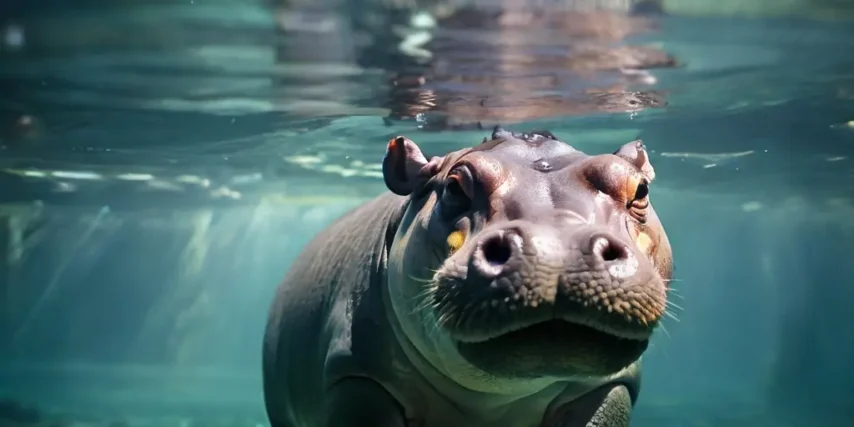The Aquatic Mystique: Unraveling the Enigmatic Submersion of Hippos
In the realm of the wild, where the waters converge with the land, lies a creature both majestic and enigmatic—the hippopotamus. Often associated with the rivers and lakes of Africa, hippos possess a unique ability to navigate the depths, prompting the question: How long can a hippo stay underwater? Delve with us into the aquatic realm of these magnificent mammals as we uncover the secrets of their submerged sojourns.

The Aquatic Adaptation:
To understand the hippo’s underwater prowess, we must first appreciate its remarkable adaptations. Despite their hefty frame, hippos are surprisingly nimble in water. Their barrel-shaped bodies are buoyant, allowing them to effortlessly glide through aquatic landscapes. Furthermore, their nostrils and ears possess specialized valves that seal shut when submerged, enabling them to remain underwater for extended periods without drowning.
The Breath-Holding Marvel:
While precise measurements vary, studies have revealed that hippos can hold their breath for an astonishing amount of time—often exceeding five minutes. This exceptional breath-holding ability is attributed to their efficient metabolism and physiological adaptations. Unlike other mammals, hippos possess a unique respiratory system that allows them to conserve oxygen and regulate their heart rate while submerged.

The Submerged Serenity:
As hippos submerge beneath the surface, they enter a world of tranquility. Drifting weightlessly, they navigate labyrinthine waterways with grace, their movements akin to a ballet beneath the waves. Yet, despite their serene demeanor, hippos are formidable creatures, capable of swift and powerful bursts of speed when needed.
The Predicament of Predation:
While the underwater realm offers respite for hippos, it also harbors lurking dangers. Beneath the tranquil surface, predators such as crocodiles lie in wait, ready to ambush unsuspecting prey. For hippos, the ability to stay submerged for extended periods serves as a vital defense mechanism, allowing them to evade detection and outmaneuver would-be assailants.
The Art of Submersion:
Observing hippos in their natural habitat offers insight into their adeptness at underwater living. With a graceful flick of their massive bodies, they vanish beneath the surface, leaving only ripples in their wake. As they explore the depths, their movements are fluid and deliberate, a testament to millions of years of evolutionary refinement.

The Limits of Submergence:
While hippos possess remarkable underwater abilities, even they have their limits. Extended periods of submersion can take a toll on their energy reserves, necessitating frequent resurfacing for air. Additionally, environmental factors such as water temperature and oxygen levels can influence the duration of their dives, highlighting the delicate balance between adaptation and survival.
In the watery realms of Africa, the hippopotamus reigns supreme as a master of underwater living. With their unparalleled breath-holding ability and graceful movements, they navigate the depths with ease, evoking a sense of wonder and admiration. As we continue to unravel the mysteries of these aquatic giants, one thing remains certain—the enigmatic submersion of hippos will continue to captivate and inspire us for generations to come.
By exploring the depths of the hippo’s aquatic world, we gain a deeper appreciation for the wonders of nature and the remarkable adaptations that enable these magnificent creatures to thrive in their watery domain. As we marvel at their underwater prowess, let us also strive to protect and preserve their habitats, ensuring that future generations may continue to be enthralled by the aquatic mystique of the hippopotamus.







